The White Swiss Shepherd Dog is the personification of beauty and friendliness. Gentle, attentive, understanding, with a wonderful disposition, she is an ideal companion and loyal friend.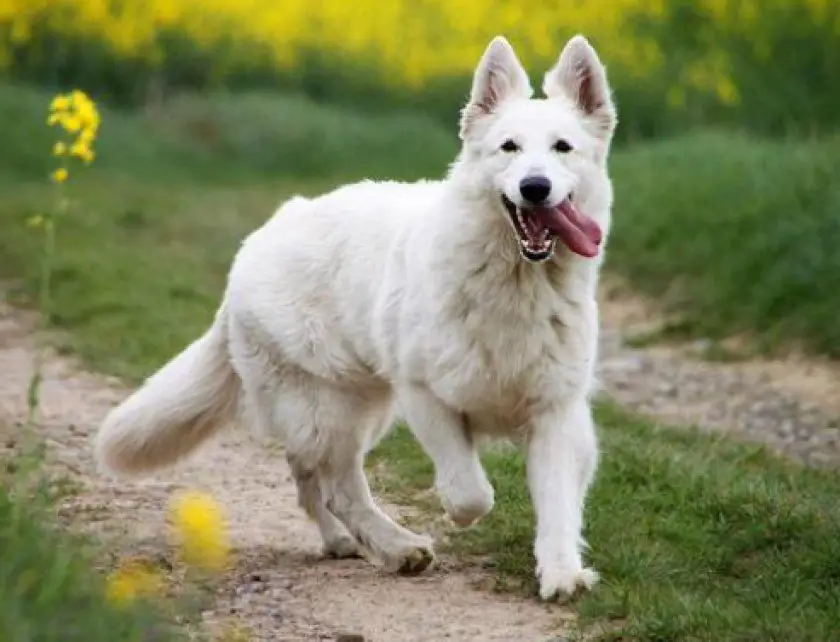
Many dog lovers have a White Swiss Shepherd dog after being conquered by the spectacular, outstanding appearance of these animals. Only over time do they discover their excellent qualities inherent in serious service dogs. This beautiful, affectionate, good-natured dog with an impressive texture, unpretentious and hardy, easy-going, and tireless in games. The love of white Swiss shepherd dogs for their owners is boundless, they need to know that close people are nearby, to feel family warmth and feel needed.
The beautiful legend that the breed of the white Swiss shepherd appeared thanks to the artificial crossing of a shepherd with a white polar wolf is far from the truth, although the dog’s caution, its ability to move silently and dexterity, indeed, give rise to an assumption of a relationship with a gray-haired inhabitant of the Arctic. In fact, the breed was formed as a result of the systematic breeding of a certain type of German shepherd, which had a white color.
In the German cynological literature of the end of the century before last, shepherd dogs, the ancestors of German shepherds, were often described, whose distinctive feature was white. And the first “delegate” from German shepherds, who participated in the Hanover Dog Show in 1882, was just a white male, which the owners named Greif. Later, his great-grandchildren, who also had a white color, were shown at dog shows and championships in Germany. By the way, the German shepherd dog with the big-name Horand von Grafrath, officially registered under the first number in the pedigree book of this breed in 1899, also belonged to the Greif family. However, the color of the famous male was yellow-gray.
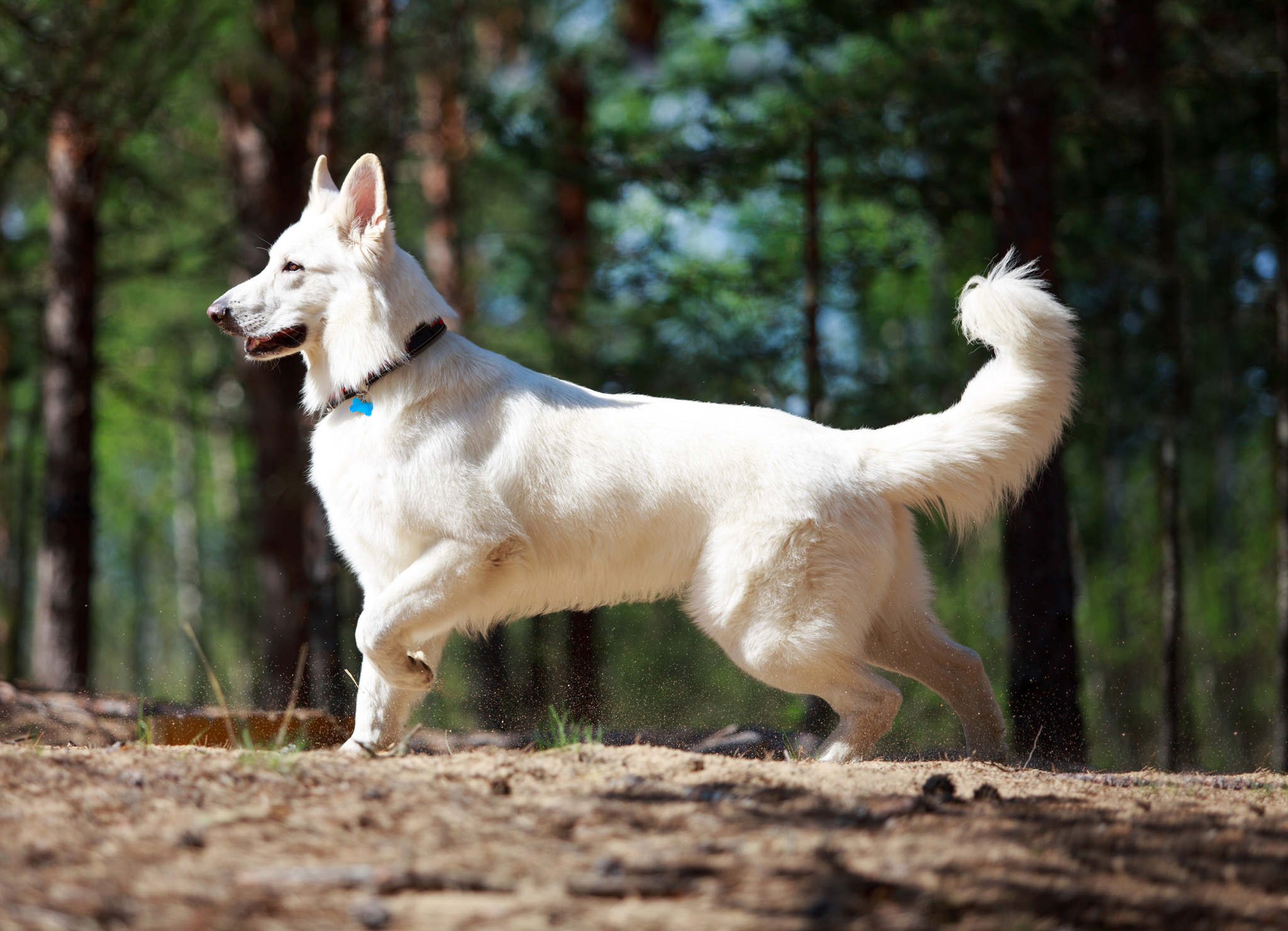
Already by the beginning of the twentieth century, the German Shepherd was not considered an ordinary shepherd breed. Such remarkable qualities as strength, endurance, outstanding intelligence, good learning ability, loyalty, have brought this dog extremely popular not only in Europe but also overseas. Breeding work was carried out very actively, the requirements for its performance and exterior were growing, but until a certain time, no importance was attached to color, and white individuals were bred in the same way as others, without distinguishing in any way.
However, in the 30s, in their native land, in Germany, white German shepherds found themselves in disgrace. The Nazis who broke through to the heights of power established their manic control, including over such an area of human interests as dog breeding. The gene for white color was found guilty by them for all defects, flaws, vices encountered in German shepherds. The verdict turned out to be “tenacious”, and even after the fall of the Hitler regime on the European continent, up to the 60s, white shepherd dogs were rejected.
Meanwhile, overseas, in the USA and Canada, breeders continued breeding White German Shepherds, proclaiming that “a good dog does not have a bad color.” Spectacular white dogs became more and more popular, often appearing on television and becoming pets of famous people, such as the Rockefellers.
Since the 60s, many North American kennel clubs began breeding white shepherds as the original breed, and over time, mating with shepherd dogs of a different color was banned.
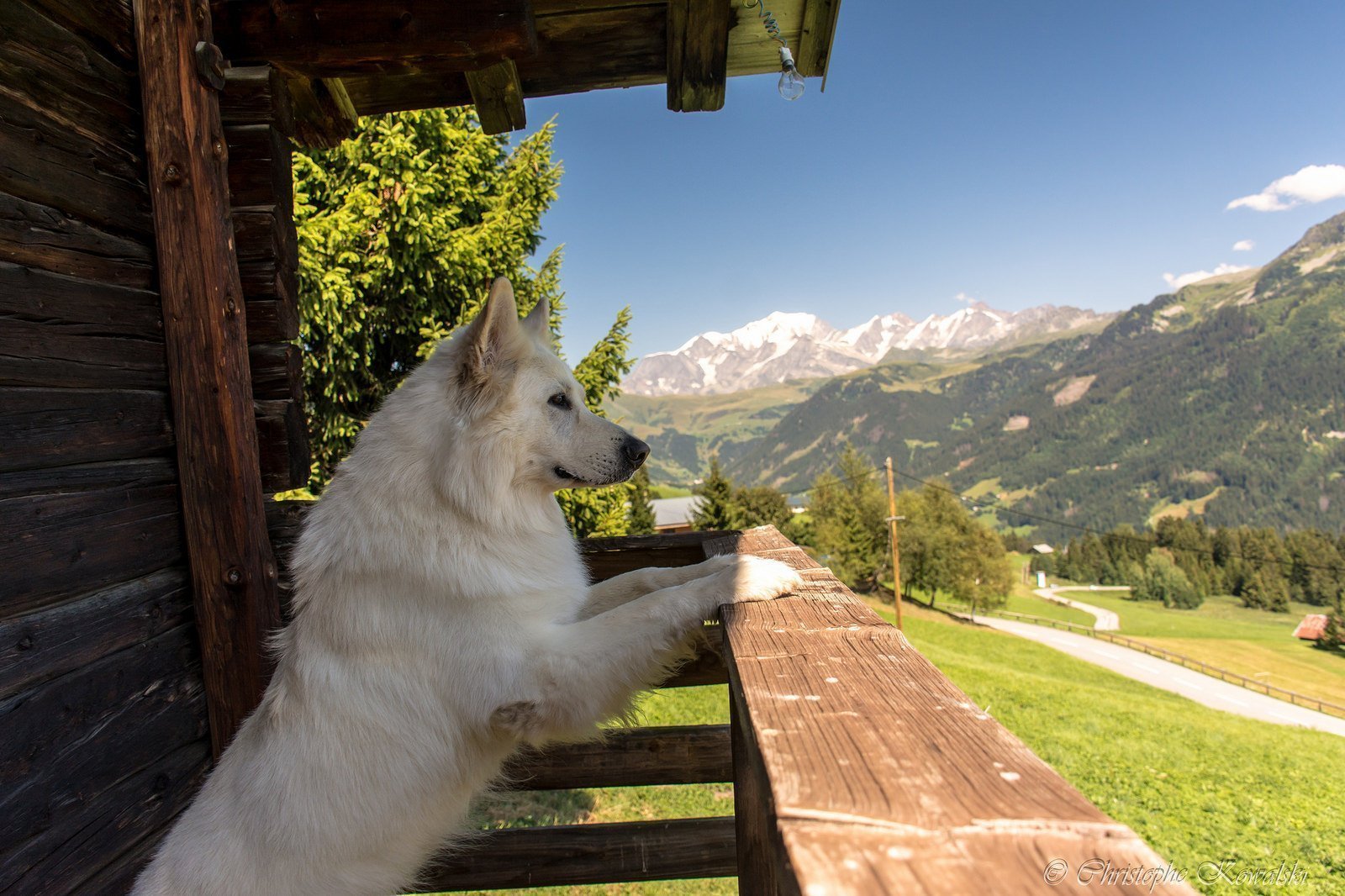
In the next decade, dogs that are now called American Canadian White Shepherds began to return to Europe. The first of them settled in Switzerland, where the development of the breed continued. The status of the ancestor of the Swiss line of selection was obtained by the male Lobo, brought from the United States, born in 1966. He and his descendants are registered in the Swiss Studbook (LOS). Over the next several decades, an impressive number of purebred dogs spread across several generations of White Shepherd Dogs in Europe, and in 2003, at the initiative of Switzerland, the American Canadian White Shepherd Dog was accepted into its ranks by an international canine handler. organization FCI, but received a different definition of the species, namely the white Swiss shepherd dog. Around the same time, the breed began to gain popularity, but today it is not one of the most common.
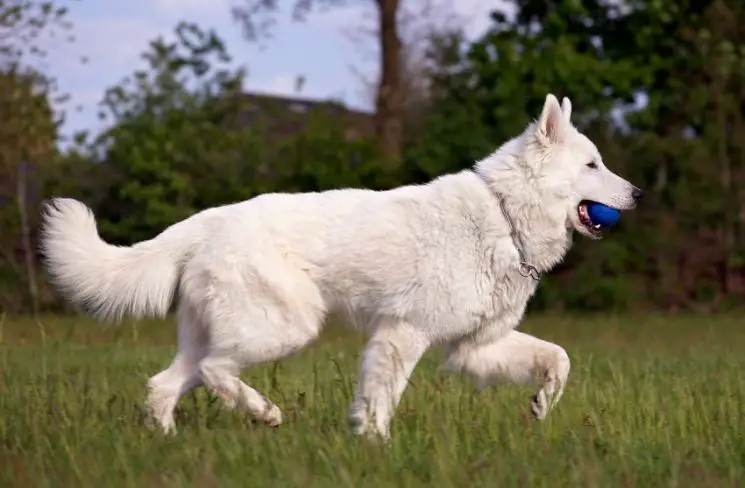
The powerful and muscular white Swiss Shepherd Dog is similar in appearance to an ordinary German one. They are almost the same in height, but the Swiss are built a little tighter. Among the representatives of the breed, there are long-haired individuals and those whose wool is of medium length. The former is distributed mainly in Germany, Austria, France, and the latter – in Holland and the North American continent.
The dog has an elongated croup, slightly inclined towards the base of the tail, the back is strong, straight. The chest is powerful, of medium width, oval in shape, deep, dropping down to the elbows, its front part is expressive. The abdomen is moderately tucked up. The sides and loins are strong. The withers are clearly pronounced.
The neck is muscular, slightly elongated; there is no dewlap. The line of the neck, gently passing from a sufficiently high set head to the withers, is nobly curved.
The head of the Swiss Shepherd Dog is proportional to the body, has straight clean outlines of lines, wedge-shaped when viewed from above and from behind. The line of transition from the forehead to the muzzle is smooth, but the very place of their connection is clearly distinguishable. The powerful muzzle is elongated, tapering slightly towards the nose. The nose itself is medium in size, the preferred color of the lobe is black, but just a dark color is allowed.
The jaws are powerful, the teeth are located strictly perpendicular to them. Scissor bite. Lips are intense black and should be dry and tightly touching.
Ears are erect, set high, slightly directed forward. Their shape is V-shaped, the tips are barely noticeable rounded.
The eyes are small, slightly slanted, their shape is almond-shaped, the color is from brown to dark brown, a black rim is welcome.
The forelimbs of the Swiss Shepherd Dog are strong, lean, their bones are not too heavy. When viewed from the front, they look quite wide apart. The shoulder and forearms are elongated, with powerful muscles. Pasterns are strong, set slightly obliquely.
The hind legs are muscular. The back looks straight, parallel. The thighs are of medium length and well-muscled. The well-boned shins are also muscular. Hocks of medium length, straight, lean.
The dog’s paws are oval in shape, the hind legs are slightly longer than the front ones. The fingers are tightly clenched and brought together almost into a ball. Elastic pads, black. The same color is preferred for the claws.
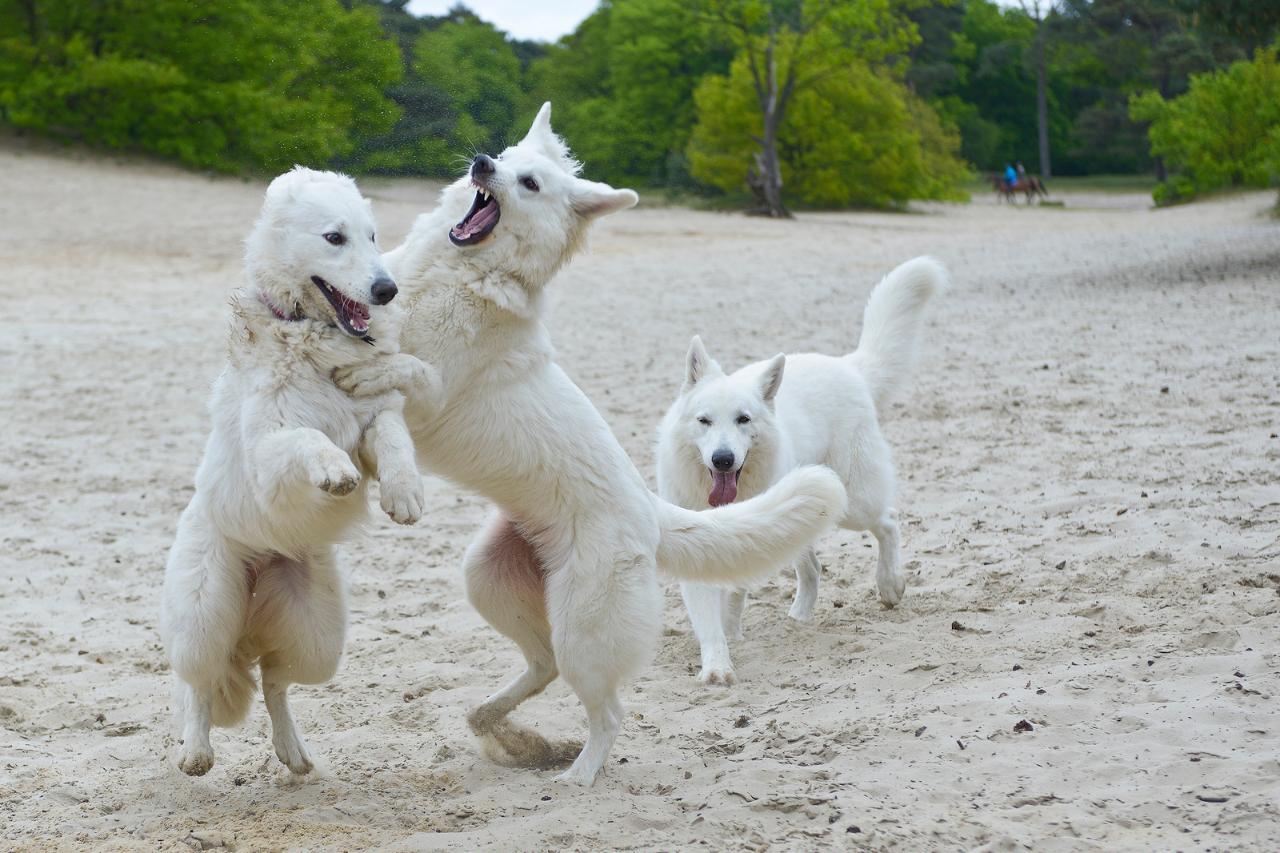
The White Swiss Shepherd Dog moves powerfully, measuredly, sequentially rearranging the limbs. The trot of the dog is smooth as if crawling.
The tail is richly covered with wool, has a saber shape. Set on fairly high, reaching at least to the hock, tapering towards the end. When the dog is in a serene state, the tail hangs to the floor, sometimes curving slightly in the lower third. In a lively animal, the tail rises vigorously but does not exceed the topline.
The fur of the animal is thick, tightly covering the body. Abundant undercoat occurs in both long-haired and long-haired dogs. The integumentary hairs are straight, hard. On the ears, muzzle, forelegs, the hair is noticeably shorter than on the neck and back of the hind legs. Long-haired Swiss Shepherd Dogs are adorned with a spectacular mane, and their hind legs are dressed in woolen “pants”. A slightly wavy coat is allowed. The color of the dog is recognized as only white.
Vices of the breed:
- The light yellow or fawn shade of color in the back, at the base of the tail, at the tips of the ears.
- Fragmentary absence of pigmentation on the nose, lips, the rim of the eyes.
- Shortened body in the shape of a square.
- Hanging or semi-erect ears.
- A curled or looped tail, a hook-shaped tail, its position above the line of the back.
- Lack of undercoat. Too soft, velvety coat and also curly coat.
- Bulging eyes. One or both eyes are blue.
- Excessive aggressiveness or, on the contrary, shyness, fearfulness
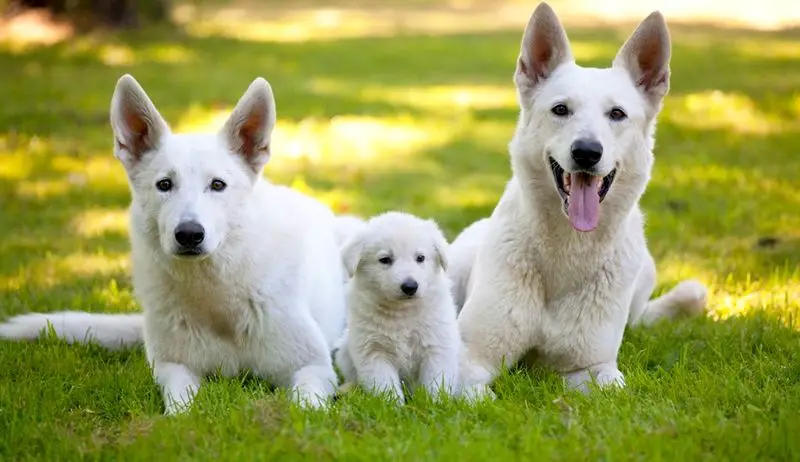
The White Swiss Shepherd Dog is dynamic, temperamental, agile, and, at the same time, is distinguished by its balance. Her character is softer and more restrained than that of the German Shepherd, but, despite her good nature, in the event of a threat to her owners and home, she shows the same qualities as her more aggressive relatives. Actually, white shepherd dogs have all the character traits that a service dog possesses: strength, indefatigability, excellent reaction, ingenuity. They are often used as guard dogs, rescuers, guides, bodyguards. Temperamental and cheerful, they are not indifferent to sports, adventures, travel, they just love to swim, play ball.
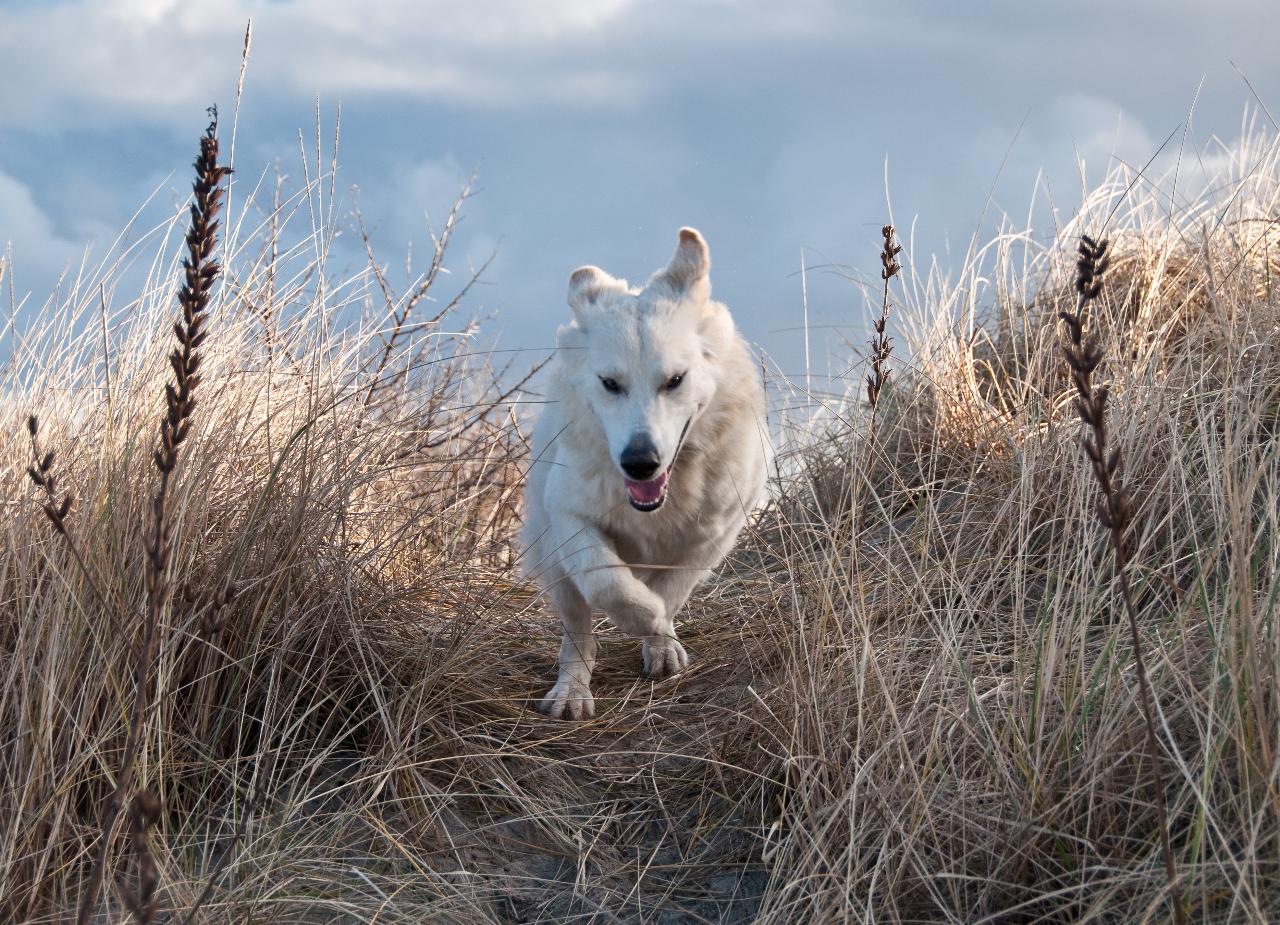
Affectionate and playful, White Swiss Shepherds get along well with all family members, including pets, including cats. They treat children very carefully, and they perceive their pranks with condescending understanding. When communicating with babies and animals smaller than herself, the shepherd dog often shows herding instincts and begins to “graze” them, carefully and vigilantly taking care of them. With strangers, dogs of this breed prefer not to come into contact, they do not clearly express their wariness towards them, they keep emphasized aloof.
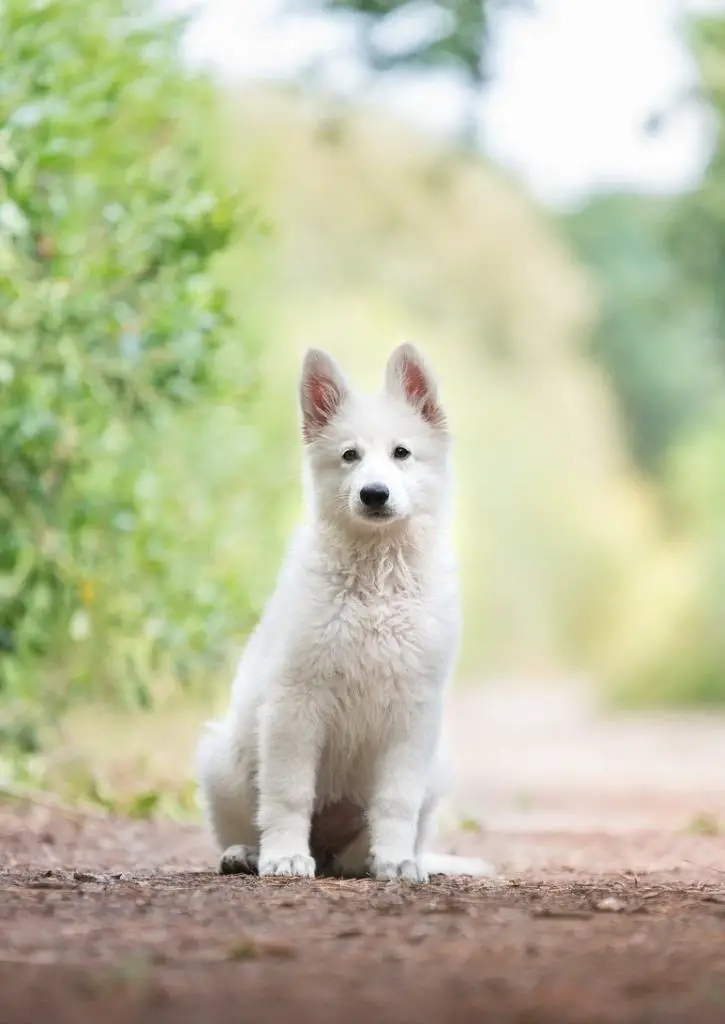
Delicate white Swiss shepherds are in great need of the attention of their owners, their affection, they also love to “talk” and have a penchant for “vocal exercises”. It is worth noting that the range of their vocal signals is very wide, and sometimes they output whole arias, the tone, and volume of which depends on their state of mind: these can be whimpers, grunts, moans, or calls.
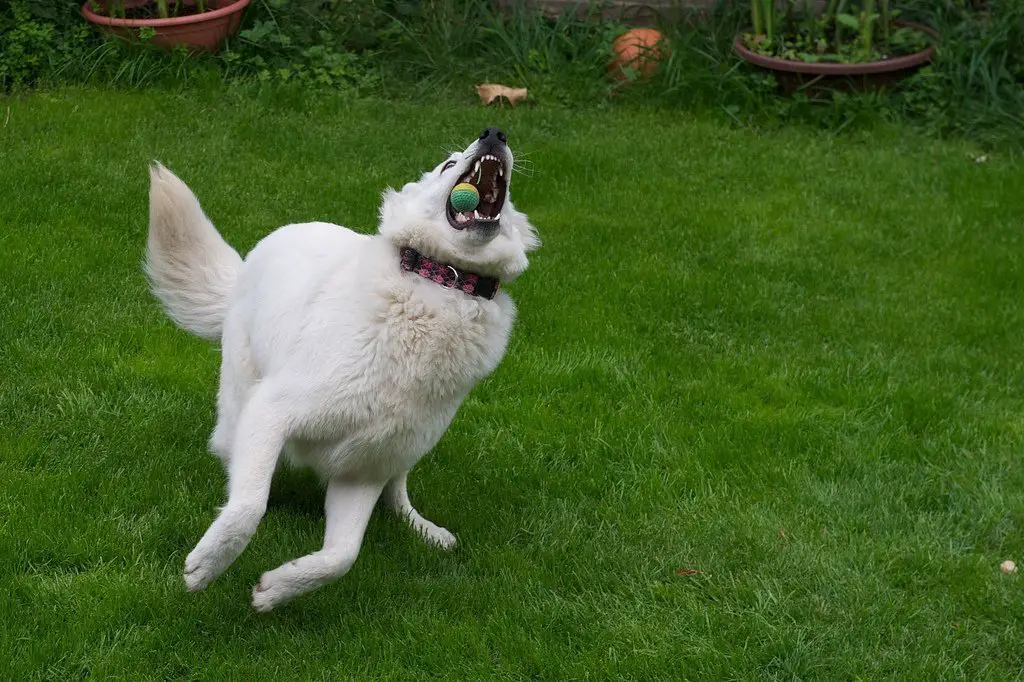
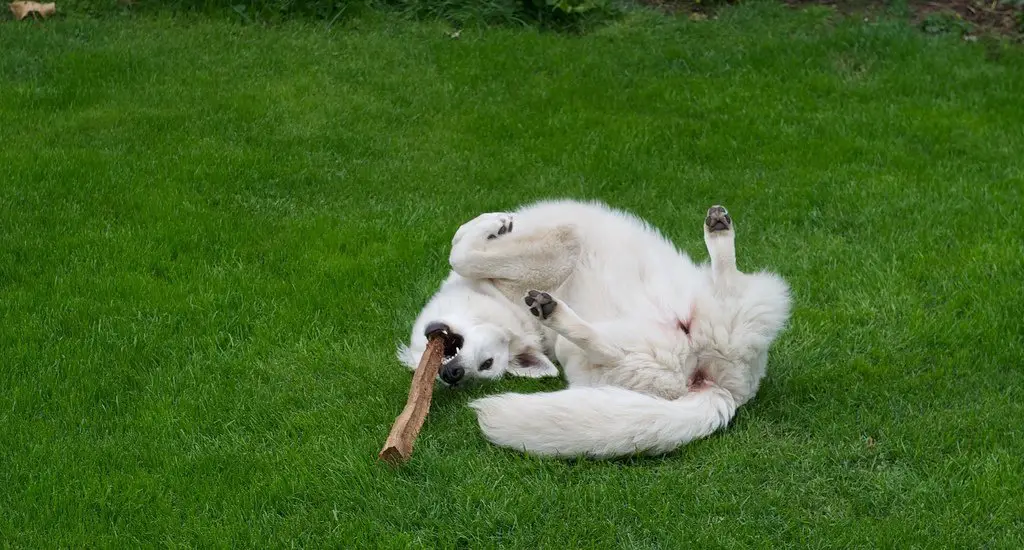
It is a pleasure to train Swiss Shepherd Dogs. At first glance, they understand and remember the commands of the owner, and their lively intellect and enthusiasm accelerate the acquisition of certain skills by animals. Learning requires consistency and consistency.
It is unacceptable to use a brutal training method about white Swiss shepherd dogs, and there is no need for this – dogs are obedient from birth. Often the owners themselves do not want to scold and punish their pets, especially when they are at a tender age, representing cute snow-white angels. However, you should not forget that this is not a lapdog, but a future serious service dog in need of training.
It is important to remember that mistreatment, lack of socialization, and training can lead to aggression towards people and other animals. The owner of the White Swiss Shepherd Dog will need calmness, consistency in actions, and confidence in himself and his strengths.
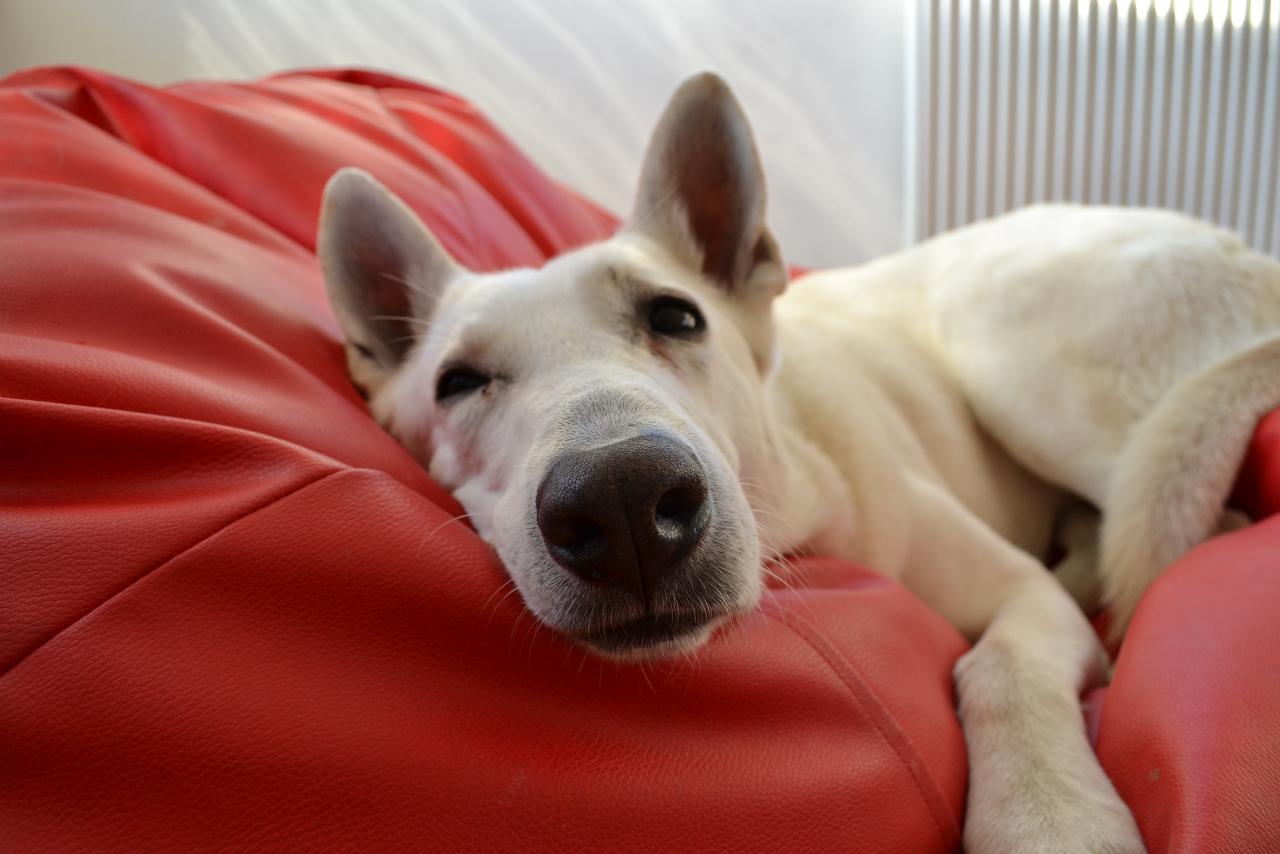
Taking care of the White Swiss Shepherd is easy. Even the thick coat of a dog, regardless of its length, can be kept in order without undue effort. She will require special care during the molting period. During this time, the dog should be brushed at least twice a week using a spray that is specially formulated for forcing. Short-haired animals are combed out with a fine comb. It is advisable to comb out a long-haired pet with a rare comb, then, if necessary, untangle or cut out tangles, then comb it with a frequent comb, and finally treat it with a natural bristle massage brush. At the end of the procedure, it is advisable to run wet hands over the fur several times to remove the remaining dead or combed hairs.
Once a week, your pet will need to brush its teeth using a toothpaste that is designed for dogs. Movements should be sweeping – from the base of the teeth to their edges. It is advisable to wipe the eyes with a damp cloth daily, the ears can be cleaned twice a month with an ordinary cotton swab. Sheepdogs are trimmed with claws, as a rule, once a month and a half, a claw cutter is used for this purpose. Unaccustomed to this tool, you can injure the claws. We advise you to contact a specialist in the first months to observe the procedure.
Bathing the White Swiss Shepherd is often discouraged, despite the color of its coat. As a rule, bathing takes place twice a year. However, after walking in bad weather, the paws and belly of the dog must be washed without fail, it is also necessary to clean the contaminated areas of its fur – it is convenient to do this with dry shampoo.
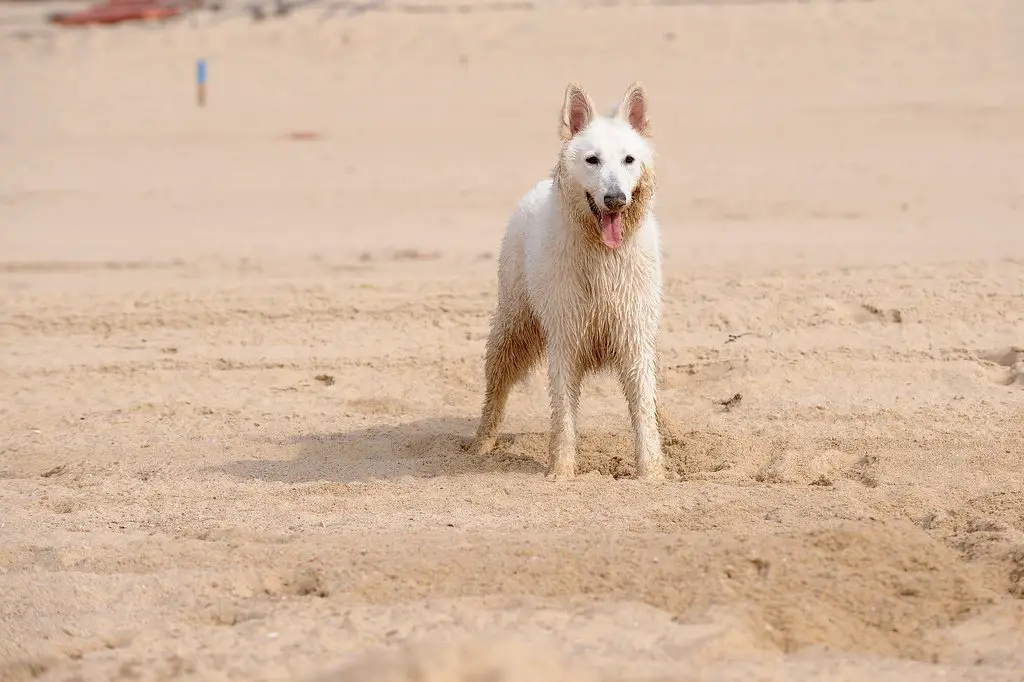
Shepherd dogs need regular exercise, and you need to take them out for a walk at least three times a day. The dog will be delighted if, while walking, he gets the opportunity to run after a ball or stick, swim, catch a flying disc, frolic in the company of his fellow tribesmen.
The White Swiss Shepherd has a good appetite and is not picky about food. You can feed her with both natural products and ready-made feed. It is advisable to treat your pet at the same time. Two to four-month-old puppies are fed 4 times a day, and by the age of six months, they gradually switch to two meals a day.
Most of the diet of a dog who eats natural foods should be meat – lamb or beef. It can be given raw or scalded in boiling water. In small quantities, steamed vegetables, cereals (rice, buckwheat, oatmeal – separately or assorted), low-fat cottage cheese and kefir, sea fish should be present in the Swiss Shepherd’s menu. You can offer your pet a boiled egg or raw yolk twice a week. Beef liver is also a portion of healthy food.
Dry food for the White Swiss Shepherd must be selected. To get started, buy a small bag of certain food for this breed and check how much your pet liked it, whether he has any allergies.
As it has long been known, the white color of a dog does not mean at all that physiological pathologies are characteristic of it. The white Swiss shepherd dog, like the German one, is quite a strong animal, distinguished by good health. However, her hereditary diseases are the same as those of the closest relatives, although such a common defect among the “Germans” as dysplasia of the hip joint is much less common among the “Swiss”.

